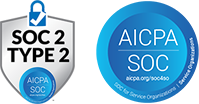What Is Diversity and Inclusion?
Diversity refers to the range of human differences—such as race, gender, age, abilities, backgrounds, and thought—within an organization. Inclusion is the practice of creating environments where all these diverse individuals feel valued, respected, and empowered to contribute fully. Together, they foster workplaces in which every voice can drive collaboration and innovation.
Why Diversity and Inclusion Matters
Organizations that embrace Diversity and Inclusion unlock broader talent pools, boost employee engagement, and enhance decision-making. Varied perspectives reduce groupthink, spark creative solutions, and improve market insight by reflecting the customers they serve. Inclusive cultures also strengthen retention—employees stay when they feel seen and supported.
Where Diversity and Inclusion Is Used
- Talent Acquisition: Crafting recruiting pipelines that reach under-represented communities and mitigate bias in screening.
- Team Collaboration: Forming cross-functional, multi-perspective workgroups that tackle complex challenges more effectively.
- Leadership Development: Ensuring succession plans reflect demographic and experiential diversity for balanced decision-making.
- Policy Design: Embedding equity lenses into compensation, benefits, and performance frameworks to promote fairness.
- Employee Experience: Running forums, resource groups, and mentorship programs that amplify diverse voices and insights.
Diversity and Inclusion Key Benefits
- Innovation & Growth: Diverse teams generate 19% more revenue because they introduce varied ideas and approaches.
- Improved Engagement: Inclusive employees report higher morale, leading to a 17% increase in productivity and lower turnover costs.
- Enhanced Reputation: Companies known for equity attract top talent and earn customer loyalty among diverse markets.
- Risk Mitigation: Proactive inclusion reduces legal exposure from discrimination claims and reputational harm.
- Better Decision-Making: Studies link inclusive teams to 30% faster decision cycles, as multiple viewpoints vet choices thoroughly.
Best Practices & Examples
- Structured Hiring Panels: Mandate diverse interview teams and standardized questions—reducing subconscious bias and improving offer-acceptance rates.
- Inclusive Leadership Training: Equip managers with tools to recognize micro-inequities and facilitate equitable meetings—one firm saw a 25% lift in under-represented promotions.
- Employee Resource Groups (ERGs): Support networks for identities—such as women, veterans, or neurodivergent staff—that advise on policy and culture.
- Equity Audits: Regularly analyze pay, promotion, and performance data by demographic cohorts—then adjust processes to close identified gaps.
- Continuous Feedback Loops: Deploy pulse surveys and focus groups to surface inclusion barriers—iterating policies and training based on real-time data.
Conclusion
Embedding Diversity and Inclusion is no longer optional—it’s a strategic imperative. By valuing varied backgrounds and ensuring every individual can thrive, organizations cultivate agile, innovative cultures. Structured programs, data-driven audits, and leadership accountability turn inclusion from aspiration into measurable impact—powering growth and resilience.
Diversity and Inclusion FAQs
Q: What is meant by diversity and inclusion?
Diversity is the mix of individual differences—demographic, experiential, and cognitive—in an organization. Inclusion is the practice and mindset of ensuring those diverse individuals feel respected, have equal access, and can contribute authentically to outcomes.
Q: What are the 4 types of diversity?
The four common types are:
- Demographic (age, gender, ethnicity)
- Experiential (education, socioeconomic background)
- Cognitive (thinking styles, problem-solving approaches)
- Functional (skills, tenure, role expertise)
Q: What is diversity and inclusion in HR?
In HR, Diversity and Inclusion encompass talent-acquisition strategies to attract varied candidates, equitable policies on compensation and promotion, inclusive learning and development, and metrics-driven oversight to ensure fair treatment and opportunity for all employees.
Q: How do you demonstrate diversity and inclusion?
Demonstrate inclusion by setting measurable targets for representation, mandating diverse panels for hiring and promotions, publishing equity audits, supporting ERGs, and embedding inclusive behaviors—like active listening and equal speaking opportunities—into leadership expectations.




